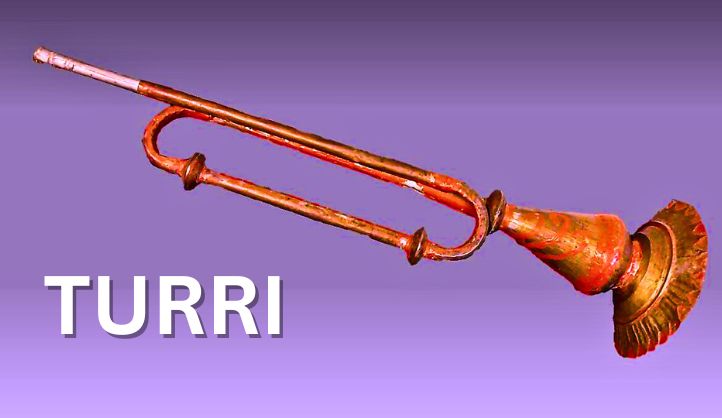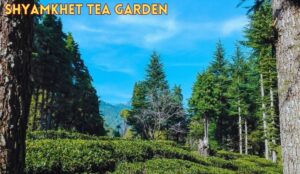Nestled amidst the serene hills and verdant valleys of Uttarakhand, India, lies a musical tradition that resonates with the essence of its cultural roots – the Turri. This indigenous wind instrument holds a special place in the hearts of the people of Uttarakhand, not just for its melodic tunes but also for its cultural significance and historical relevance.
The Legacy of the Turri
The Turri often likened to a wooden flute, is crafted meticulously from a piece of bamboo or wood. Its slender frame belies its powerful ability to evoke emotions ranging from nostalgia to joyous celebration. Historically, the Turri have been an integral part of the folk music scene in Uttarakhand, accompanying traditional songs and dances that speak of the region’s rich folklore, myths, and everyday life.
Crafting Tradition
Crafting a Turri is not merely a mechanical process but an art form in itself. Skilled artisans, often belonging to specific communities known for their expertise in woodwork and musical instruments, meticulously carve and shape each Turri by hand. The craftsmanship involved ensures that each is not just an instrument but a unique piece of art, resonating with the soul of Uttarakhand.
Cultural Significance
In Uttarakhand, the Turri transcends its role as a musical instrument; it is a symbol of cultural identity and community bonding. Traditionally played during festivals, weddings, and religious ceremonies, its music binds together generations, fostering a sense of continuity and belonging among the people. The haunting melodies of this instrument accompany folk songs that narrate tales of love, valor, and the natural beauty of the Himalayan landscape.
Contemporary Resurgence
While it has deep historical roots, its popularity has seen ebbs and flows over the decades. In recent years, however, there has been a renewed interest in preserving and promoting this traditional instrument. Efforts by local cultural organizations, musicians, and enthusiasts have helped in revitalizing interest among the younger generation. Workshops, concerts, and collaborations with modern music genres have given the Turri a new lease of life, ensuring its melodies continue to echo through the hills of Uttarakhand.
The Future of the Turri
As Uttarakhand embraces modernity while cherishing its cultural heritage, it stands as a testament to the resilience of tradition in the face of change. Efforts to document and archive traditional tunes played on the Turri are underway, ensuring that future generations can appreciate and learn from this musical legacy. Moreover, initiatives to teach the art to aspiring craftsmen aim to sustain the craftsmanship and ensure the instrument’s continuity.
Some Other Traditional Instruments Of Uttrakhand
Uttarakhand, with its rich cultural diversity and heritage, boasts several traditional instruments that reflect the region’s vibrant cultural identity.
Damru
The Damru is a small two-headed drum shaped like an hourglass. It is primarily associated with Lord Shiva and is often played during religious rituals, especially during devotional songs (bhajans) and ceremonies in temples across Uttarakhand.
Dhol
The Dhol is a large barrel-shaped drum with two drumheads, played with sticks. It is widely used in folk music and dance performances in Uttarakhand, adding rhythm and energy to traditional folk songs and celebrations.
Dholki
The dholki is a smaller, barrel-shaped drum with a single drumhead, played with hands or sticks. It accompanies folk singers and musicians during festive occasions, weddings, and cultural gatherings in Uttarakhand.
Mashakbeen
The bagpipes, known locally as Mashakbeen or Mashakpiper, are a unique addition to Uttarakhand’s traditional musical instruments. They were introduced during the British colonial period and are still played in some regions, particularly in folk music ensembles.
Conclusion
In conclusion, the Turri is not just an instrument; it is a living embodiment of Uttarakhand’s rich cultural tapestry. Its melodies continue to weave stories of the past and present, resonating across generations and bridging the gap between tradition and modernity. As we celebrate the Turri, we celebrate its music and the spirit of a community that treasures its heritage amidst the breathtaking landscapes of Uttarakhand.
FAQs About Turri Traditional Instrument Of Uttarakhand
1. What is a Turri?
It is a traditional wind instrument native to Uttarakhand, India. It is typically made from bamboo or wood and resembles a flute in appearance.
2. What is the cultural significance of the Turri?
It holds deep cultural significance in Uttarakhand. It is often played during festivals, weddings, and religious ceremonies, accompanying folk songs that narrate local myths, tales, and everyday life in the region.
3. How is the Turri made?
Crafting a Turri involves skilled artisans who carve and shape bamboo or wood into the instrument’s slender form. It is a labor-intensive process that requires precision and craftsmanship.
4. Where can I hear the Turri being played?
It is primarily heard in Uttarakhand, especially in rural areas where folk music traditions are still vibrant. It is also featured in cultural performances and sometimes in modern music collaborations that aim to preserve traditional sounds.
5. Is the Turri still popular in modern times?
While its popularity has fluctuated over the years, there has been a recent resurgence of interest in the Turri. Efforts by local cultural organizations and musicians have helped revive its presence, ensuring that it continues to be appreciated and passed down to future generations.
6. Can anyone learn to play the Turri?
Yes, it can be learned by anyone interested in exploring traditional music. There are workshops and programs in Uttarakhand that teach the basics of playing the instrument, although mastering it requires dedication and practice.





